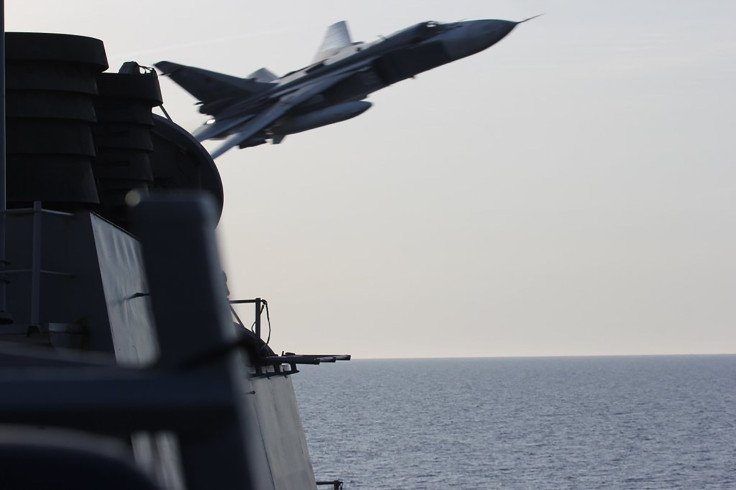Russian Warplanes Intruded Into South Korea's Air Defense Zone Hours Before Kim Jong-un's Missile Test
KEY POINTS
- The planes were spotted on Ulleung Island in the East Sea
- The Russian warplanes moved out of it 30 minutes later
- A Chinese aircraft too breached KADIZ a day earlier
South Korea has said that Russian military aircraft entered its air defense identification zone (KADIZ) without prior notice in March, hours before Pyongyang test-fired an intercontinental ballistic missile. A Chinese aircraft too breached KADIZ a day earlier.
According to a statement by Seoul Tuesday, two Russian planes flew into South Korea's air defense identification zone on March 24. This prompted the South Korean military to scramble its fighters to prevent their approach to the country's airspace, reported Yonhap News Agency.
The Russian warplanes flew in the KADIZ northwest of South Korea's Ulleung Island in the East Sea at around local time 11 a.m. and moved out of it 30 minutes later. Hours later, North Korea test-fired a banned intercontinental ballistic missile, the first since 2017, seen as a major escalation by South Korea.
Though Pyongyang claimed the missile launched was the new Hwasong-17 intercontinental ballistic missile, Seoul later conflicted with the claim. According to South Korea, it was just an older, smaller intercontinental ballistic missile, and Kim Jong-un was only trying to head off a negative domestic reaction to a failed launch.
North Korea is one of the few countries, which support the Russian invasion of Ukraine. Interestingly, two days before the missile test, Moscow and Pyongyang had held talks to develop bilateral ties "in the context of changes taking place in the international arena."
South Korea also reported another intrusion a day before the test. This time, a Chinese military plane also entered the KADIZ near Ieo Islet, a submerged rock south of South Korea's southern resort island of Jeju. According to the officials, the area was where the air defense identification zones of South Korea and China overlapped. The overlapping happened in 2013 after Seoul extended its air defense zone to include Ieo, which Seoul controls. There is a research station platform built atop the submerged rock, which China has also claimed.
This isn't the first time that the Russian and Chinese aircraft intrude into the South Korean air defense identification zone. Last November, South Korea had to scrambled fighters after Russian and Chinese jets on a joint exercise briefly entered KADIZ. However, there was no invasion of airspace and the South Korean military was told by the Chinese side that it was normal training. Further evaluation too proved the situation to be a Russia-China joint exercise, and that the aircraft flew inside the zone for around 10 minutes.

© Copyright IBTimes 2025. All rights reserved.





















